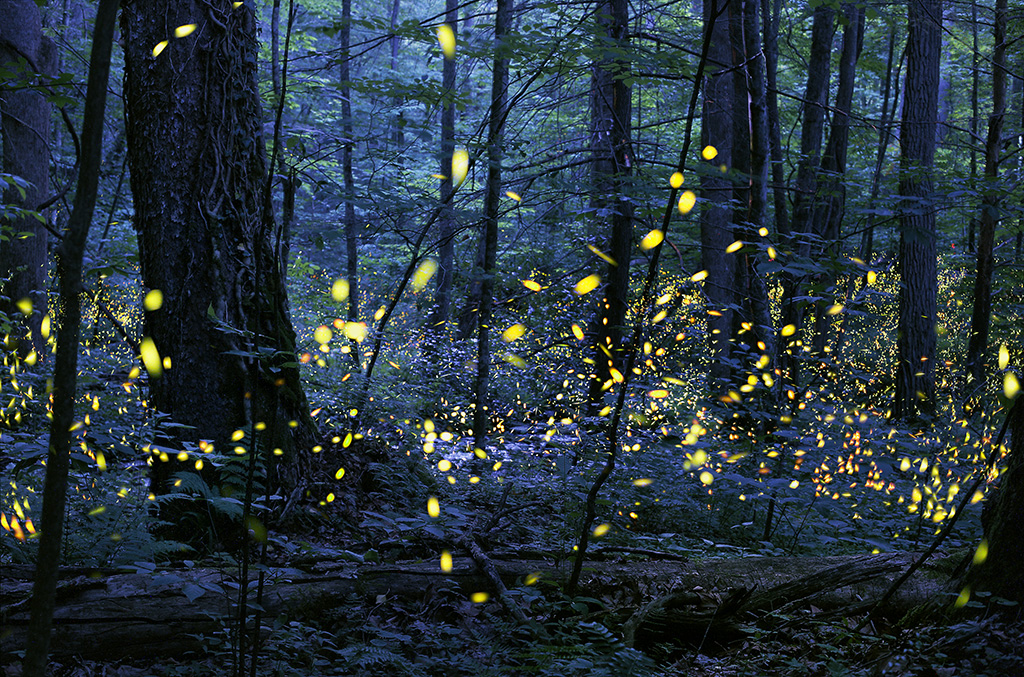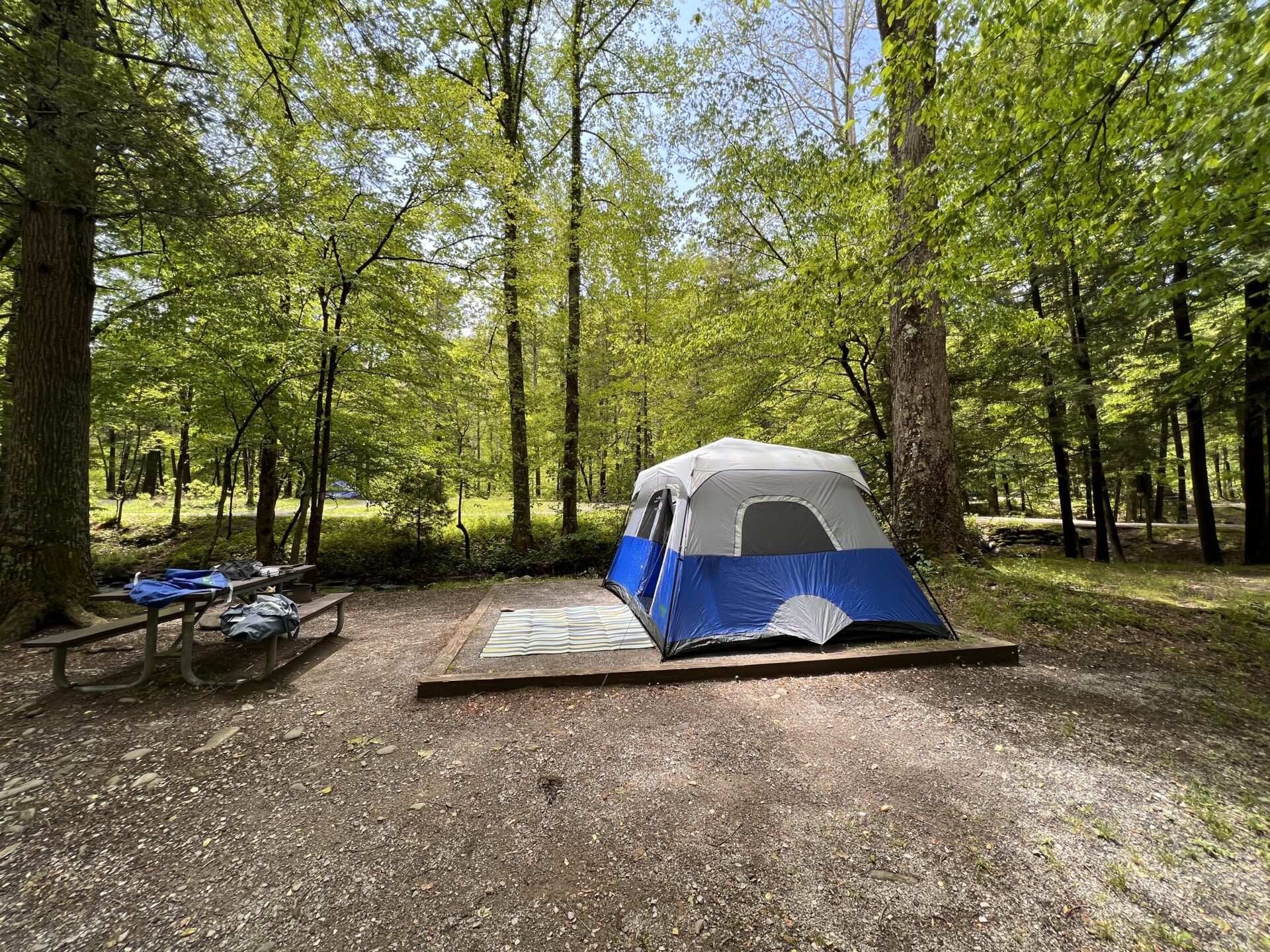Every year in late May to early June, a natural phenomenon occurs in Great Smoky Mountains National Park that draws crowds from around the world… and it’s not their annual Bigfoot festival. It’s the remarkable synchronous fireflies and their stunning light displays.
Depending on where you grew up, you might be abundantly familiar with fireflies. Depending on where you’re from, you might call ‘em lightning bugs. The ones in the Smokies are different. These synchronous fireflies (Photinus carolinus) are one of at least 19 species of fireflies that call the Great Smoky Mountains home. However, they are the only species in America that synchronize their light patterns. It isn’t uncommon to see some species flashing their lights at odd patterns, but the synchronous fireflies all light up the woods at the same time, and then go dark at the same time, as if on cue.
What’s With the Flashing?
Fireflies flash their lights to attract mates. The ones you see flashing are all male, looking for a female to mate with. Male synchronous fireflies will take flight around 9:30 in the evening and go throughout the night, with all of the males simultaneously lighting up the forest with their flashing lights at once, repeating for long stretches of time.

The synchronized flashing is a stunning and unusual sight that’s absolutely worth trying to see.
Now, female fireflies are able to luminesce as well. When a female finds a display appealing, she responds with her own glow, effectively allowing a potential suitor to find her amidst the swarm of competitors. After mating, the male fireflies continue their synchronized displays for a few more weeks until the end of the annual display in late June or early July.
Best Places to Watch
The peak viewing dates vary from year to year, but typically occur over a two or three week period in late May or early June. The areas around the campgrounds at Elkmont are particularly popular, but many folks choose to view the fireflies from along the Appalachian Trail near Cades Cove. However, the Elkmont Campground is one of the most popular areas, and it’s the designated area for viewing if you win the lottery.
How to See the Fireflies
In order to control the high volume of visitors, the National Park Service implemented a lottery system for visitors who want to use their cars. The lottery costs $1 to enter on recreation.gov (https://www.recreation.gov/ticket/facility/233374), and if you’re awarded a pass, you’ll be charged an extra $24. (One of the few lotteries where you’re winning the privilege of paying them.)

Elkmont is a pretty enough campground even without the fireflies.
The reservations are issued automatically, so once you win it, you’re in the system—no transfers. (And no rain checks either—the fireflies won’t wait for anyone.) After that, all you need to do is show up between 6:00 p.m. and 8:00 p.m. to the Elkmont viewing area. (Late arrivals not allowed, either, just so you know.)
Tips for Optimal Viewing
Even though the event is popular, and can be a bit crowded, there are a few things you can do to be sure you have the best viewing experience possible.
Arrive early.
The fireflies will get started at night, but the viewing area doesn’t allow late entries… and you’re working on the fireflies’ time, not the other way around
Head in towards some of the interior areas.
The best viewing area ain’t usually from the parking lot. You don’t have to go far—just far enough that you can get away from the vehicle headlights and in towards some of the fireflies’ usual wooded territory
Bring some warm clothes.
Coats and jackets are a good bet, and a blanket and camping chair will set you up for a cozy viewing experience
Be mindful of others.
If you have a flashlight, keep the beam pointed towards the ground. Most hikers will put a red filter over the flashlight, which is less harsh on the eyes and can help you adjust to your night time vision a bit better
Respect the fireflies.
There’s no need to try to catch any of them—they’re all around, and they have only a few previous weeks to attract a mate, so it’s best to admire them from a distance.
Whether you win the lottery or decide to hike it in, catching the synchronous fireflies in Great Smoky Mountains National Park is absolutely extraordinary. It’s one of many delights that the Smokies have to offer, and it only happens for a few weeks out of the year, making it an extremely special spectacle.

And if you’re traveling to the Smokies another time, or if you’re just plain ol’ curious what else there is to do in the park, check out our Great Smoky Mountains app, releasing on the Revealed Travel app in May.



0 Comments